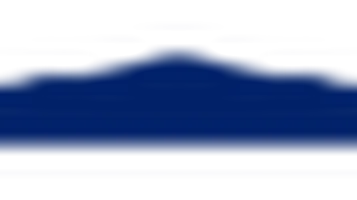Rotary Cutters: The Essential Tool for Precision and Efficiency
Rotary cutters are versatile tools primarily used in quilting, sewing, and various crafts for precisely cutting fabric and other materials. Featuring a circular blade, these cutters are designed to roll over the material, offering a clean and straight edge with minimal effort. Unlike traditional scissors, rotary cutters allow for smoother and more accurate cuts, especially when dealing with multiple layers of fabric. They come in various sizes, with larger blades suitable for big projects and smaller ones ideal for detailed work. Equipped with ergonomic handles, these cutters ensure a comfortable grip, reducing hand fatigue. Safety features, such as retractable blades and blade guards, are often included to prevent accidents, making rotary cutters an essential tool for hobbyists and professionals alike.

In the world of crafting, quilting, and sewing, precision is paramount. A slight deviation in cutting fabric can lead to skewed patterns, mismatched seams, and overall dissatisfaction with the final product. Enter the rotary cutter—an indispensable tool that has revolutionized the way hobbyists and professionals alike approach their projects. This review delves into the various facets of rotary cutters, highlighting their advantages, potential drawbacks, and the key factors to consider when selecting one.
Design and Functionality
At its core, a rotary cutter consists of a circular blade mounted on a handle, designed to roll along the surface of the fabric to make clean, precise cuts. Unlike traditional scissors, which operate with a shearing motion, a rotary cutter slices through fabric with minimal distortion. This is particularly beneficial when working with intricate patterns or multiple layers of fabric.
The handle of a rotary cutter is ergonomically designed to provide comfort during extended use. Many models feature a soft-grip handle, which reduces hand fatigue—a significant advantage for those long quilting sessions. The blade itself is typically made from high-quality stainless steel, ensuring durability and sharpness over time. Some advanced models even come with titanium-coated blades, offering enhanced longevity and precision.
Versatility and Performance
One of the standout features of rotary cutters is their versatility. They are not limited to fabric alone; these cutters can also be used on paper, leather, vinyl, and even certain types of thin plastic. This makes them a valuable addition to any crafter’s toolkit. Additionally, rotary cutters come in various blade sizes, ranging from 18mm to 60mm. The smaller blades are ideal for detailed work and tight curves, while the larger blades are perfect for cutting through multiple layers of fabric or making long, straight cuts.
Performance-wise, rotary cutters excel in delivering clean, straight edges with minimal effort. The rolling action of the blade reduces the risk of fraying and ensures that each cut is as precise as possible. This is particularly important in quilting, where accuracy is crucial for piecing together intricate designs. Moreover, the ease of use associated with rotary cutters means that even beginners can achieve professional-looking results with minimal practice.
Safety Features
Safety is a critical consideration when working with any cutting tool, and rotary cutters are no exception. Most modern rotary cutters come equipped with various safety features to protect users from accidental cuts. A common safety feature is the retractable blade guard, which covers the blade when not in use. Some models also include a locking mechanism that prevents the blade from engaging unless the user is actively cutting. These features are particularly important for those who may have children in their crafting space or for anyone who values their fingers!
Maintenance and Blade Replacement
A sharp blade is essential for optimal performance, and fortunately, maintaining a rotary cutter is relatively straightforward. Most rotary cutters have easily replaceable blades, which can be swapped out as soon as they begin to dull. Regular maintenance involves cleaning the blade and handle to remove any fabric fibers or debris that may accumulate during use. Some users also invest in blade sharpeners to extend the life of their blades, though this is a matter of personal preference.
Price and Value
Rotary cutters are available at a wide range of price points, from budget-friendly options to high-end models. While it may be tempting to opt for the cheapest available cutter, it is worth investing in a reputable brand that offers quality and durability. A high-quality rotary cutter can last for years with proper maintenance, making it a worthwhile investment for serious crafters.
Potential Drawbacks
Despite their numerous advantages, rotary cutters are not without their drawbacks. One potential issue is the learning curve associated with their use. While they are relatively easy to master, beginners may initially struggle with achieving straight lines or managing curves. Additionally, because rotary cutters are so sharp, there is an inherent risk of injury if not used properly.
Another consideration is the need for a cutting mat. Unlike scissors, which can be used on any surface, rotary cutters require a self-healing cutting mat to protect both the blade and the work surface. This adds an extra cost to the initial investment, though the benefits of using a rotary cutter typically outweigh this additional expense.
Conclusion
In summary, rotary cutters are a game-changer for anyone involved in fabric cutting, crafting, and quilting. Their precision, versatility, and ease of use make them an essential tool for achieving professional-quality results. While they do come with a learning curve and require the use of a cutting mat, the benefits they offer far surpass these minor inconveniences. Whether you are a seasoned quilter or a novice crafter, a rotary cutter is a valuable addition to your toolkit, promising to enhance both the efficiency and quality of your projects.
---






